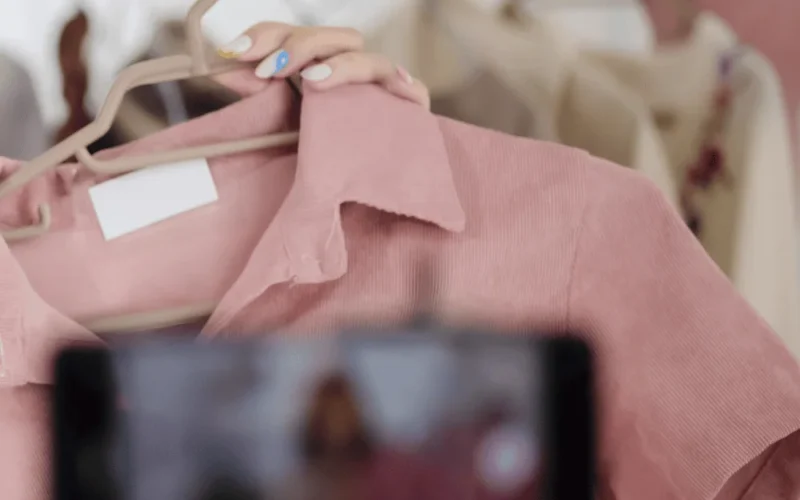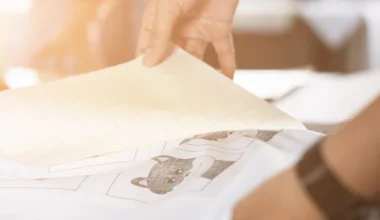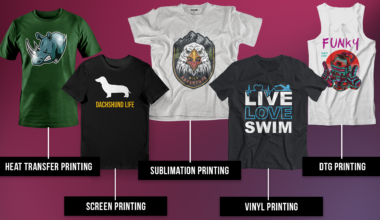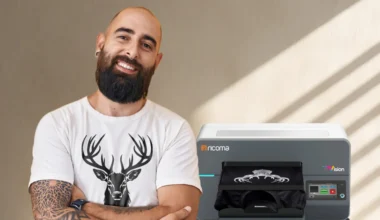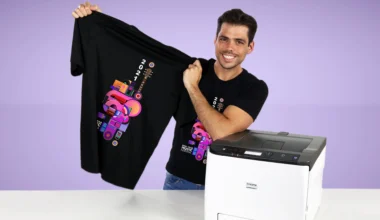If you’re a new crafter looking to turn your hobby into a full-time career, you might be interested in the direct to film printing pros and cons so you can make the best decision for your business.
But first, let’s learn a little more about it!
What is Direct to Film Printing?
Direct to film printing is a method used to create high-quality prints for screen printing.
Unlike traditional methods that involve creating a physical stencil, direct-to-film printing uses a film positive as the stencil. Some of the many benefits of this method include:
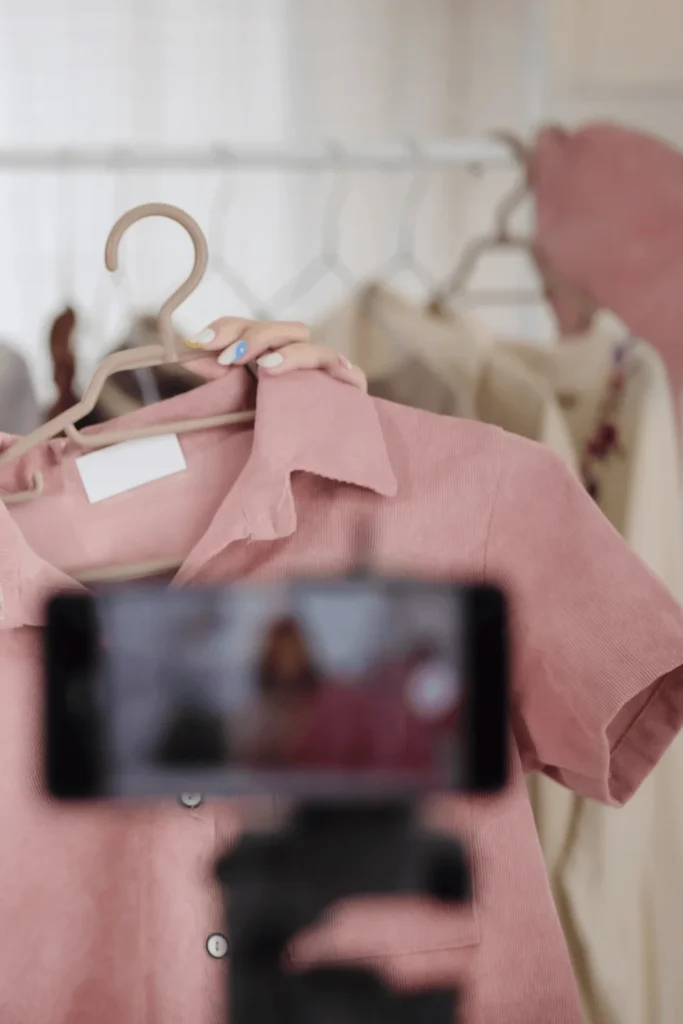
- Improved detail, allowing for finer details and sharper edges in designs.
- Faster turnaround so you can reduce production time.
- Cost-effectiveness for large-scale projects.
One of the cool parts of direct-to-film printing is that it’s opened up new possibilities for designers. Now, instead of them being limited to screen printers simply creating stencils, it’s now made the process even faster, more accurate, and a lot more cost-effective.
Plus, it now lets us create even more intricate designs that were previously impossible to achieve using screen printing!
What Can You Use a Direct-to-Film Printer For?
As a hobbyist or new small business owner, direct-to-film printers can offer a slew of benefits for creating your own apparel and textile projects. Direct-to-film printing is great for:
- Creating stencils for applying designs onto multiple different substrates.
- High-quality textile printing, like t-shirts, hoodies, and other apparel items.
- Signage to create high-res graphics for signs and banners.
- Accessories, promotional products and custom-made creations, like mugs, bags, and keychains.
A huge benefit of direct-to-film printers is its versatility and flexibility, it can be used on…
- Various types of fabric, like cotton, polyester, and blends.
- Paper, perfect for posters, flyers, and other printed materials.
- Plastic substrates like PVC, making it ideal for creating signs and displays.
How Does Direct-to-Film Printing Work?
Direct to film printing is a multi-step process that requires you to prepare your artwork, print your film positive, and use it as a stencil for screen printing. Start by preparing your artwork digitally, done using graphic design software such as Adobe Illustrator or CorelDRAW. Front there, all you need to do is print your film, which will be on a transparent sheet that holds the design that will be printed.
As you might have realized, there are quite a few things you’ll need aside from a direct-to-film printer, including graphic design software to prepare the artwork and screen printing equipment like transfer film, adhesive powder, and ink.
Note: There might be a bit of a learning curve when working with a direct to film transfer printer. Look out for some common troubleshooting issues like film distortion and ink clogging.
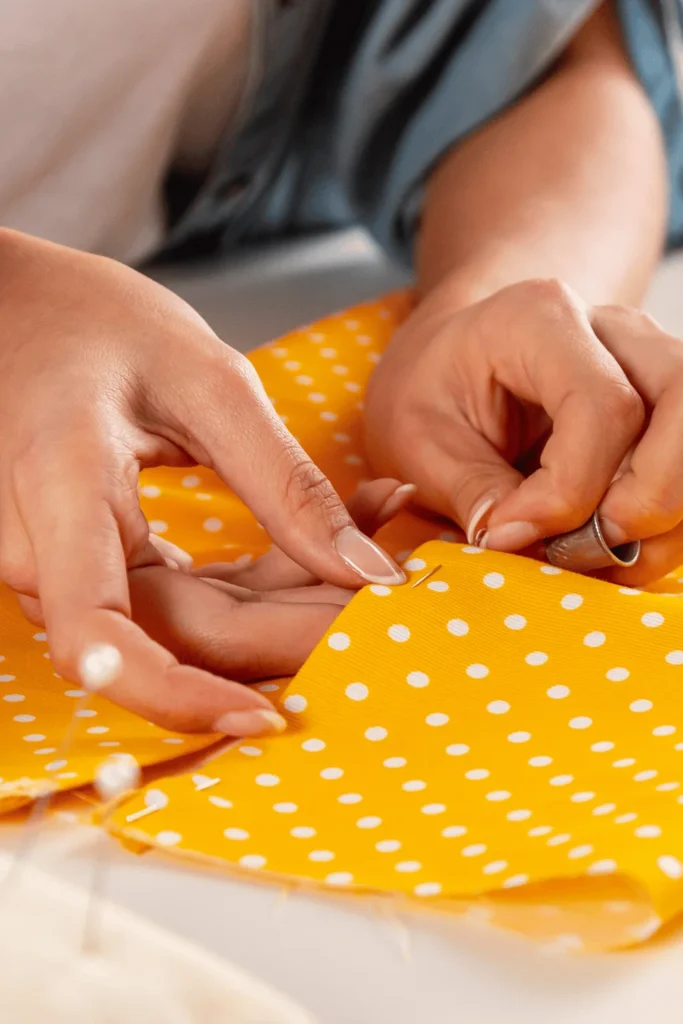
The Pros of Direct to Film Printing
1. It’s Ability to Print Quality and Vibrant Colors
Perhaps one of the biggest arguments when weighing direct to film printing pros and cons is its superb quality.
Direct-to-film printing allows you to create high-resolution prints with superior image quality, using a special white ink in the printer to enhance the vibrancy of print-outs, especially in darker colors. Because of this, it can also create photo-realistic prints to capture the depth of more in-detail printing methods.
2. It’s Versatile
Direct to film printing gives you the ability to print on all sorts of substrates, from cotton-poly blends, silk, textiles, signs, PVCs and more. As long as the garment can fit under a heat press, it can likely use a DTF printer for its design!
3. It’s Durable
While other printing methods might lead to crack, peel or fade, DTF printer’s ink penetrates deep within the fabric, making the design last longer.
4. It Has a Fast Turnaround Time
When you have a roll-to-roll DTF printer with automated printers, dryers and shakers, printers require very minimal set-up time. It’s great for businesses looking to create bulk orders.
The Cons of Direct-to-Film Printing
- Takes Up More Space
Because DTF printers are greater for bulk orders, they tend to be much larger compared to other printer-styles that can be placed on a tabletop. DTF printers need to fit in many mechanisms into one, and in-turn require a lot more space in your studio or office to properly do its job.
- Requires a Special Outlet & Special Supplies
Just like your drier at home needs a special outlet, the drier component requires 220 volts to run. Not only that, but you’ll also need some more DTF printer supplies and maintenance in general compared to a DTG printer. On top of needing rolls of paper, you’ll also need powder to put into the powder shaker, and an air purifier (which Ricoma’s model has already built-in!).
How to Choose The Best Direct to Film Printer
Before anything, consider print volume and substrate compatibility. The best direct-to-film printer is able to handle your workload and will be compatible with the materials you plan to print on.
Print Resolution
Print resolution determines the sharpness and clarity of your prints. Higher resolution prints will have more detail and better image quality.
To evaluate the print resolution of a direct to film printer, look for the printer’s DPI (dots per inch) rating. A higher DPI rating indicates higher resolution prints. Graphic design, apparel printing, and signage requires fine details and high print resolution.
Color Capabilities
Direct to film printers vary in their color capabilities, including the number of colors they can print and color accuracy. Some direct to film printers can print a wide range of colors, including spot colors and process colors, while others may have limitations.
Specifically, the color accuracy of a printer refers to how closely it can reproduce colors from the original artwork, and higher-end DTF printers typically offer better color accuracy than cheaper ones.
To assess the color capabilities of a direct to film printer, look for specifications like the number of ink channels or colors the printer supports, consider using high-quality films and inks designed for direct to film printing, and calibrate your printer regularly to ensure accurate color reproduction.
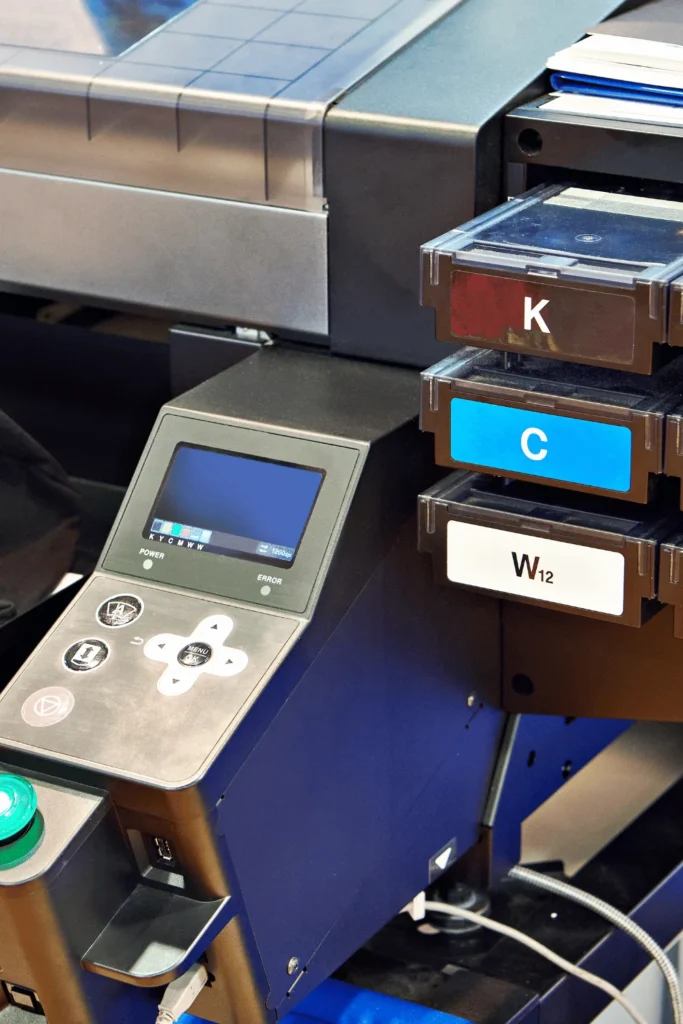
Film Compatibility
Using the wrong film can result in poor print quality or compatibility issues. Most printer manufacturers provide a list of compatible films. Check this list before purchasing films for your printer. If you’re unsure about film compatibility, consult with your film supplier or the printer manufacturer for recommendations.
For direct to film printing, consider using films specifically designed for this purpose, as these films are typically coated to ensure optimal ink adhesion and print quality.
Print Speed
Faster print speeds allow you to complete print jobs more quickly, increasing your overall productivity. To compare print speeds between different direct to film printers, look for specifications such as the number of prints per hour or the time it takes to print a standard-sized design.
Optimize your printer settings for speed while maintaining print quality, and keep your printer well-maintained to ensure optimal performance and avoid slowdowns due to mechanical issues.
Ease of Use
Think about the intuitiveness of a printer’s interface, the availability of helpful features such as automatic calibration, and the accessibility of customer support resources when considering one.
Support and Warranty
Reliable customer support and a comprehensive warranty can provide peace of mind and help you resolve any issues that may arise after you’ve weighed the direct to film printing pros and cons and decided to take the plunge!
Look for a manufacturer that not only offers a warranty, but a dedicated support team, readily available resources such as manuals and tutorials, and a warranty that covers essential components and repairs.
Beyond Direct to Film Printing Pros and Cons: Explore Ricoma’s Direct to Film Supplies!
Ricoma offers a range of high-quality direct-to-film supplies, including films and inks, designed to enhance your printing business and create long-lasting prints. Explore our DTF printers now!
